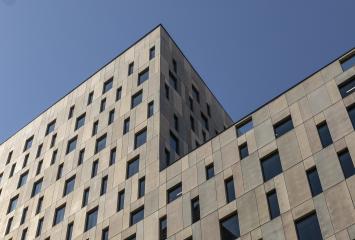How to avoid visual pollution in workspaces
Visual pollution is a concept that can be applied to buildings and is similar to horror vacui in art, it refers to a space that is over-decorated or over-occupied and can give the impression of being 'cluttered' or even messy.
Although it can initially be seen as a mere aesthetic problem, it can affect the efficiency of employees and their well-being, so it is important to detect and fix it.
Problems caused by visual pollution
An excess of information, which can be the result of a visually cluttered space, can lead to employee distraction, eyestrain and even increase stress when there are too many visual stimuli.
An example could be the roads: nothing should encourage driver distraction like too many signs. They should always be as minimalist as possible, without offering too much information that forces users to decode the messages (which could cause accidents).
How to know if a space needs to be changed
There is no manual that explains how to create an ideal workplace but there are certain trends that could be applied which go beyond reducing the number of elements in a room:
Artwork and plants often generate a positive impact on employees, enhancing their visual experience in the workplace and helping to create a warm environment.
Modular spaces offer many possibilities as we can see in Miguel Ángel, 23 in Madrid or Ciutat de Granada, 150 in Barcelona as they are wider spaces so it’s difficult to see them cluttered. They also offer more flexibility in terms of decoration.
It is important to visualize all the possibilities that the office can have before settling in, as well as to include all the elements to personalize the workplace, but without excesses. In short: less is more.

